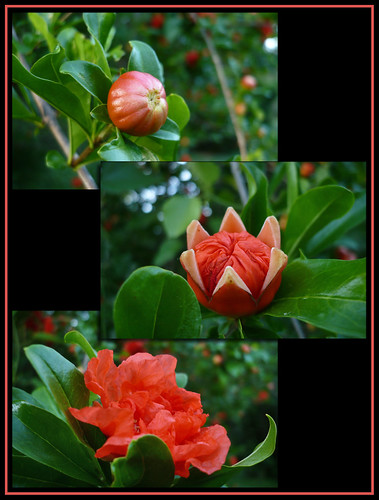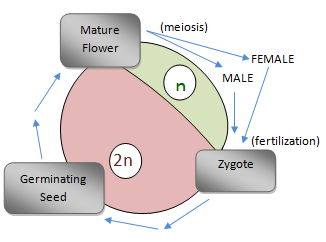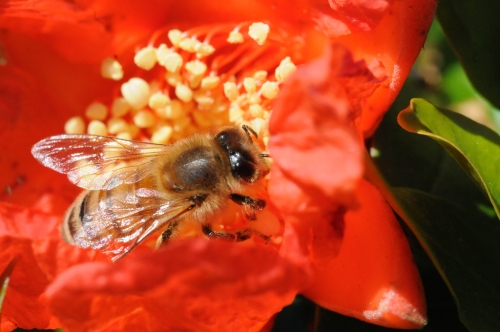Reproduction
The process of reproduction begins with dispersal of the
seeds. Since Punica granatum itself is immobile, it
relies on environmental agents, such as other organisms, to aid
in dispersing the seeds in new locations. When organisms
eat the fruit and excrete waste, seeds are distributed in
various new places. If conditions are right, a new
pomegranate plant may begin to grow from a recently deposited
seed. This process allows the survival of the Punica
granatum species, as well as increases the range of its
occupied niche.
The diagram on the left illustrates the life cycle of the pomegranate. Recall that plants exhibit an alternation of generations. This is displayed in the diagram. The pink portion represents the multicellular diploid (2n) stage, while the green portion represents the multicellular haploid (n) stage.
In order to bear fruit, the pomegranate must be pollinated. Since it is monoecious, it may be self-pollinated or cross-pollinated. However, cross-pollination tends to be more successful, yielding a larger percentage of fruit that reach maturation. Wind does not play a major role in this fertilization process due to the weight of the pollen. Instead insects, especially bees, play a vital role in the pollination process. They are drawn in toward the flower by the sweet scent of its blossom. Upon emerging from a flower, a bee is coated with sticky pollen. As it travels from blossom to blossom, it transfers pollen from one to the next. The more flowers it visits, the more likely it is that fertilization will take place.
Check out another organism that depends on insects for pollination...globe artichoke.
Interested in learning about one of the insects that aid in pollination? Check out the European Honey Bee.
Aside from the reproductive process, Punica granatum interacts with other organisms in numerous other ways. To learn more about the relationships between species, go to INTERACTIONS.

